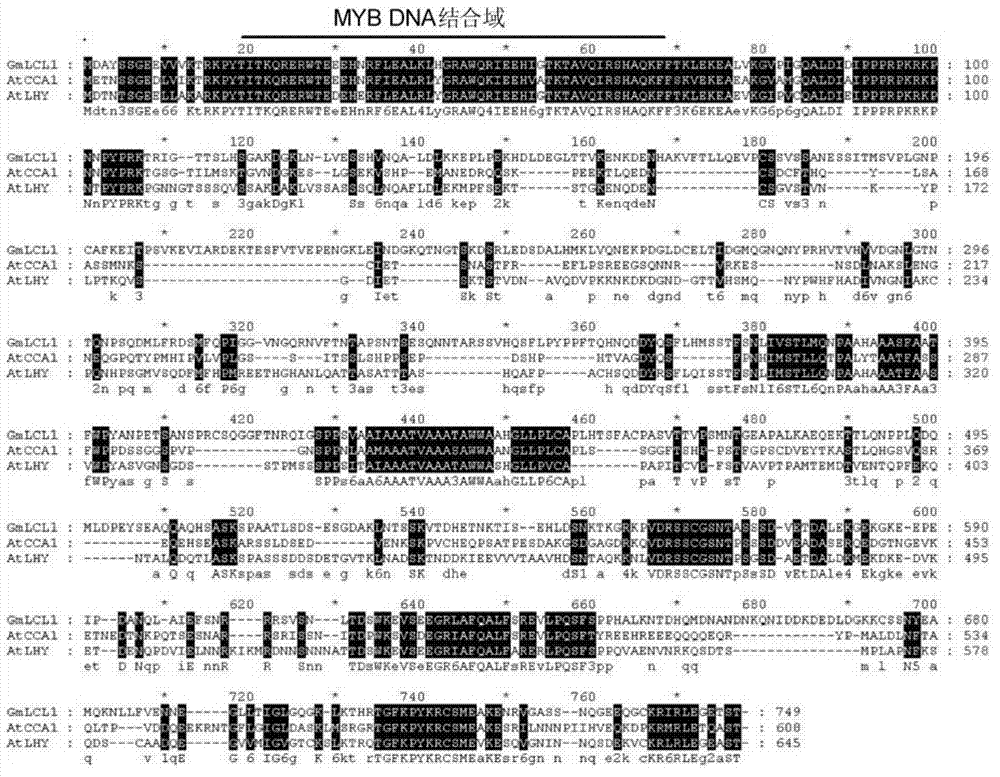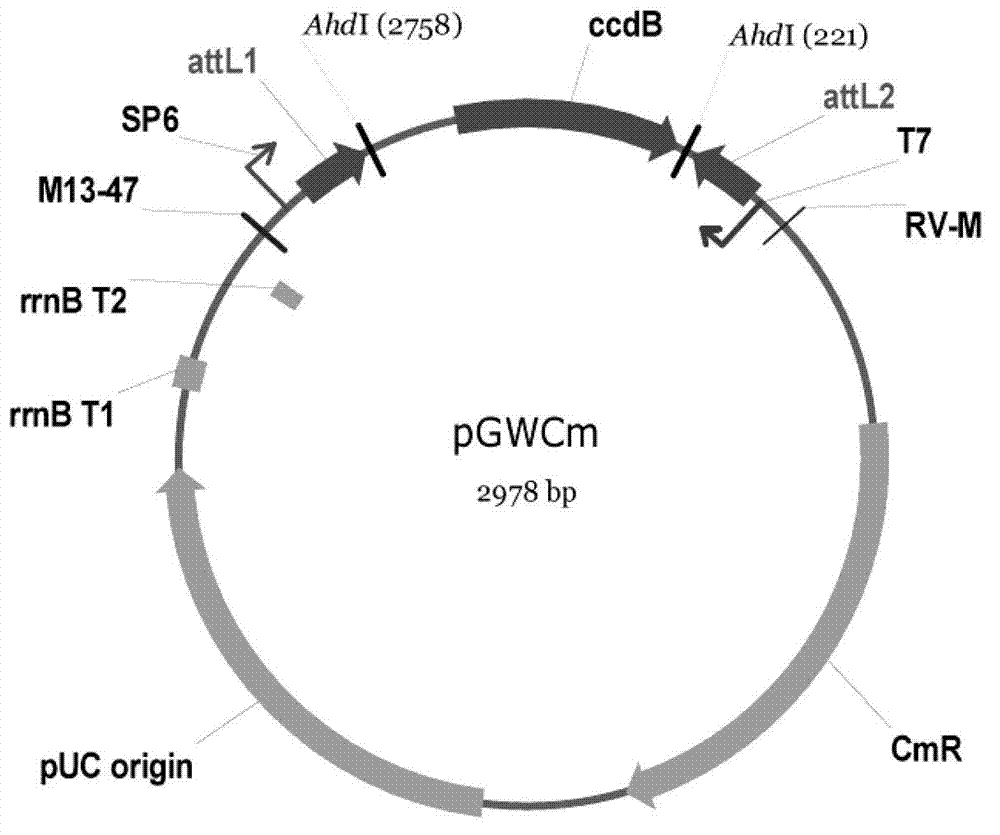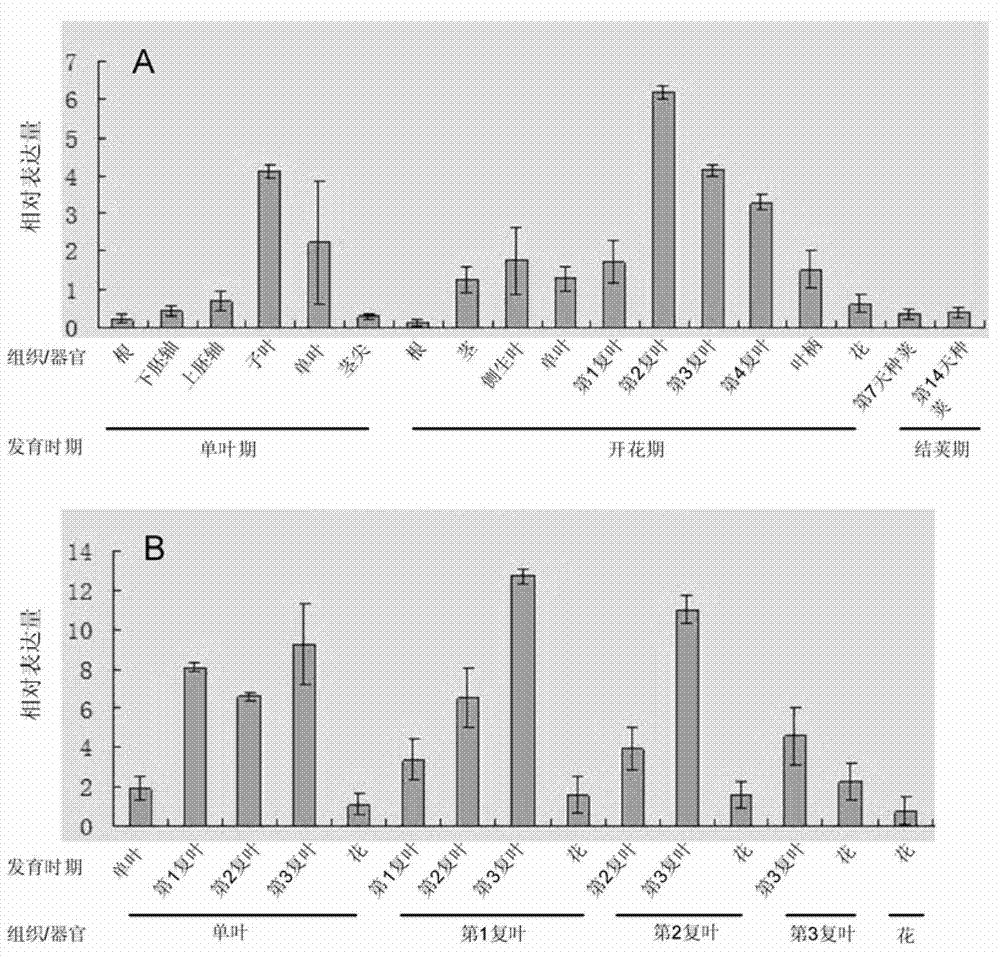Soy biological clock gene GmLCL1, encoding protein and application thereof
A gene and soybean technology, applied in the direction of plant genetic improvement, application, genetic engineering, etc., can solve the problem of changing the sensitivity of plants to photoperiod and flowering time
- Summary
- Abstract
- Description
- Claims
- Application Information
AI Technical Summary
Problems solved by technology
Method used
Image
Examples
Embodiment 1
[0029] Example 1 Cloning of soybean circadian clock gene GmLCL1
[0030] Genes were amplified from soybean Kennong 18 (Glycine max L. Kennong 18) by RT-PCR using forward primer 5'-ATGGACGCATACTCCTCCGGC-3' and reverse primer 5'-TCAAGTCGAAGTCTCCCCTTCCA-3' respectively.
[0031] The PCR reaction program was: 95°C 5min pre-denaturation, 95°C 30S, 50°C 35S, 72°C 2min 30S, 30 cycles, 72°C 10min extension.
[0032] Acquisition of GmLCL1 cloning vector: clone the amplified PCR product directly into such as TA cloning method figure 2 on the indicated pGWCm vector. Firstly, the pGWCm vector was hydrolyzed with Ahd I endonuclease, and then the digested product was recovered with a gel recovery kit to obtain the T vector. Then the PCR product and the T vector were ligated at 16° C. for 12 hours, the ligated product was transformed into Escherichia coli DH5α, amplified therein, positive clones were screened, and sequenced.
[0033] The gene sequence of the obtained GmLCL1 gene is shown...
Embodiment 2
[0034] Example 2 Amino acid sequence analysis of protein encoded by soybean circadian clock gene GmLCL1
[0035] The similarity between the GmLCL1 protein sequence of the soybean circadian clock gene and the Arabidopsis LHY protein is 55.8%, and it is highly similar in the conserved functional domain (MYB DAN-binding domain), such as figure 1 shown. Therefore, it is speculated that GmLCL1 has a similar function to Arabidopsis LHY, and has the activity of inhibiting plant flowering.
Embodiment 3
[0036] Example 3 Expression levels of soybean circadian clock gene GmLCL1 in different tissues and organs and different developmental stages in soybean
[0037] The expression of soybean circadian clock gene GmLCL1 in soybean was determined by quantitative real time RT-PCR. Real-time fluorescent quantitative PCR was carried out by ABIStepOne, and SYBR Green I was used to detect the fluorescent signal.
[0038] Upstream primer: 5'-TATCATTTCTTTTATCCCTCCAACGG-3'
[0039] Downstream primer: 5'-ACACACATCTACACGACAAGTTTC-3'
[0040] The reaction system is:
[0041]
[0042] The reaction parameters were two-step method: 95°C 10S, hot start; 95°C 5S, 60°C 1min, 40 cycles. Gene expression was normalized and plotted using gene chip data analysis software Genesis.
[0043] The soybean circadian clock gene GmLCL1 is expressed in soybean cotyledons, stems, leaves, flowers, and petioles, and the highest expression level is in the second compound leaf at the flowering stage, as shown in ...
PUM
 Login to View More
Login to View More Abstract
Description
Claims
Application Information
 Login to View More
Login to View More - R&D
- Intellectual Property
- Life Sciences
- Materials
- Tech Scout
- Unparalleled Data Quality
- Higher Quality Content
- 60% Fewer Hallucinations
Browse by: Latest US Patents, China's latest patents, Technical Efficacy Thesaurus, Application Domain, Technology Topic, Popular Technical Reports.
© 2025 PatSnap. All rights reserved.Legal|Privacy policy|Modern Slavery Act Transparency Statement|Sitemap|About US| Contact US: help@patsnap.com



